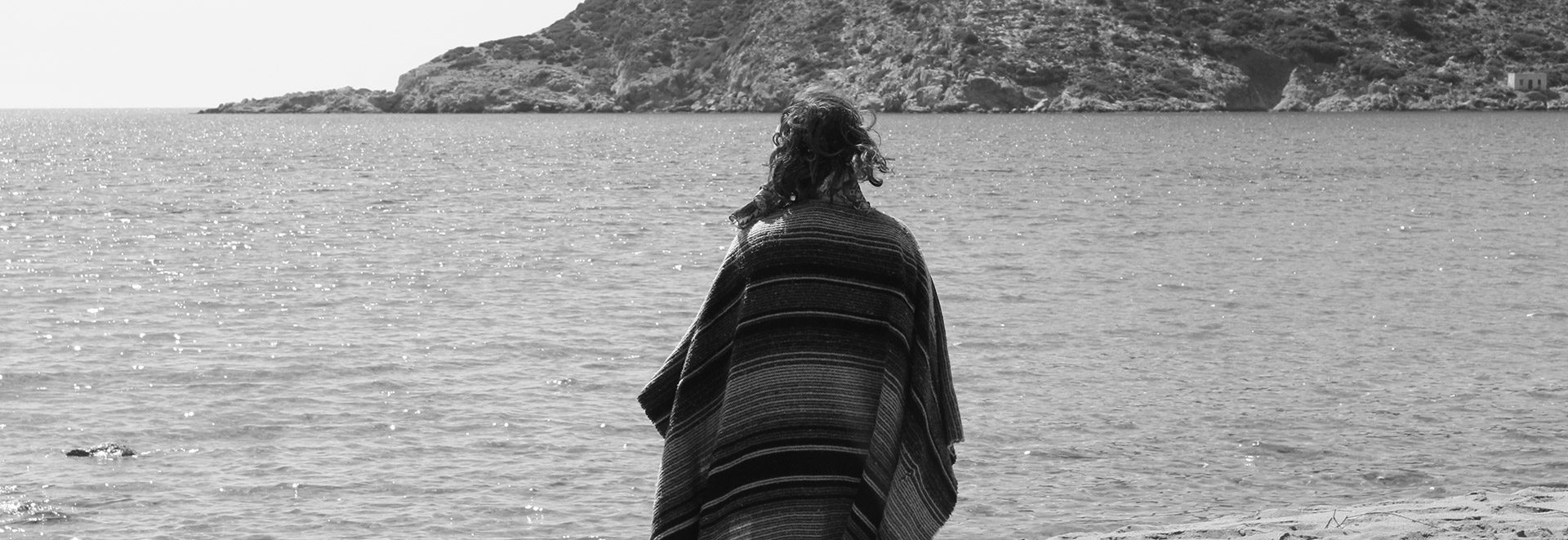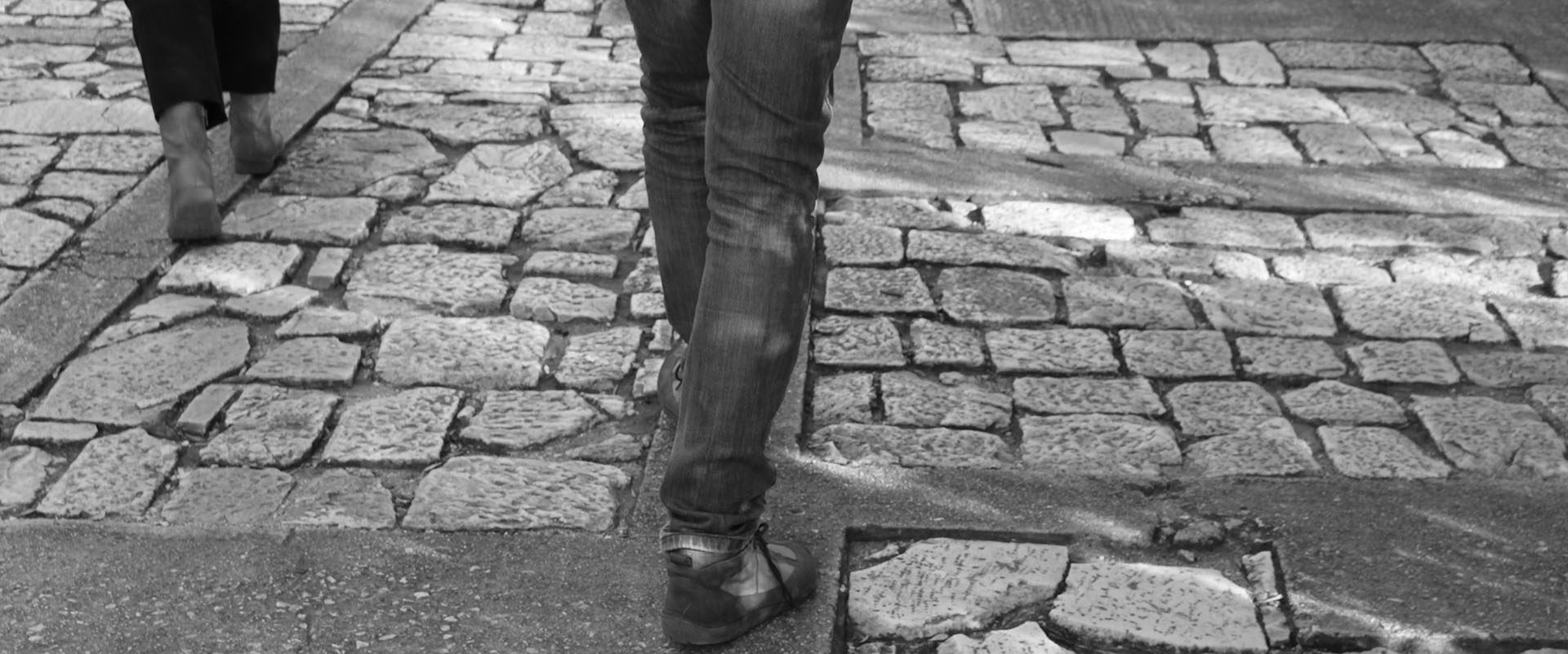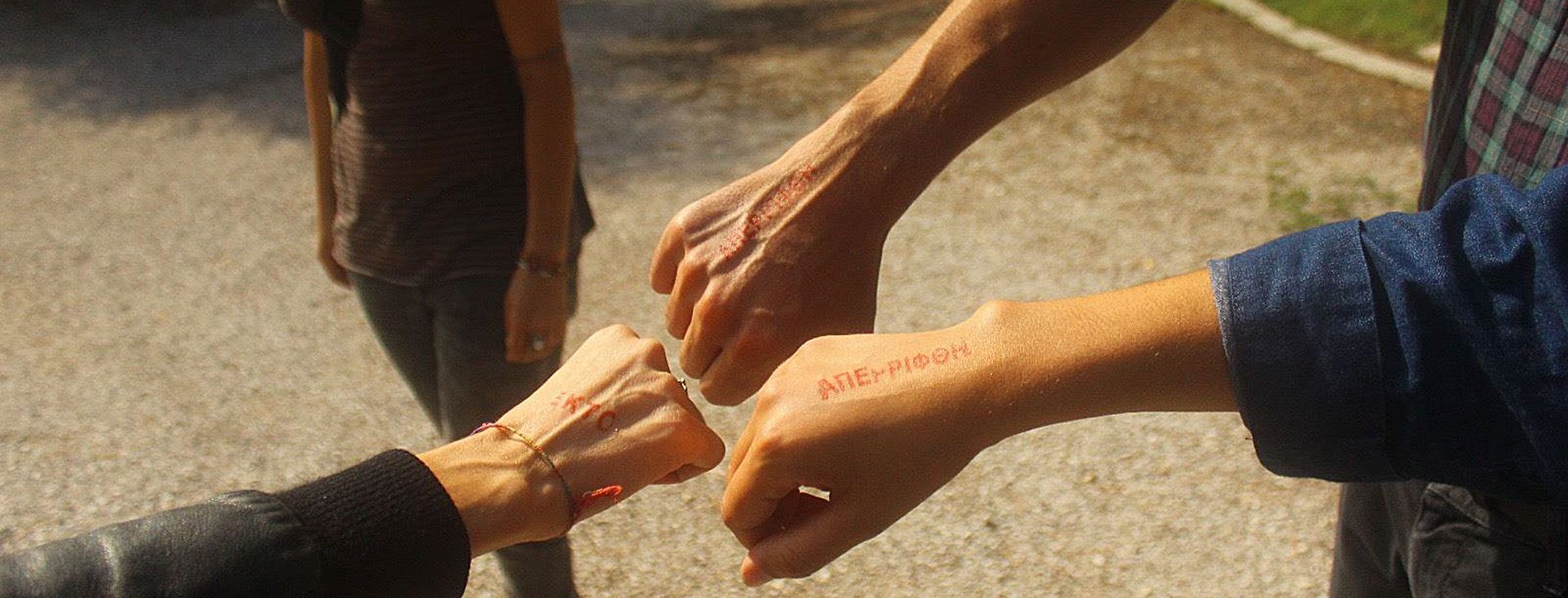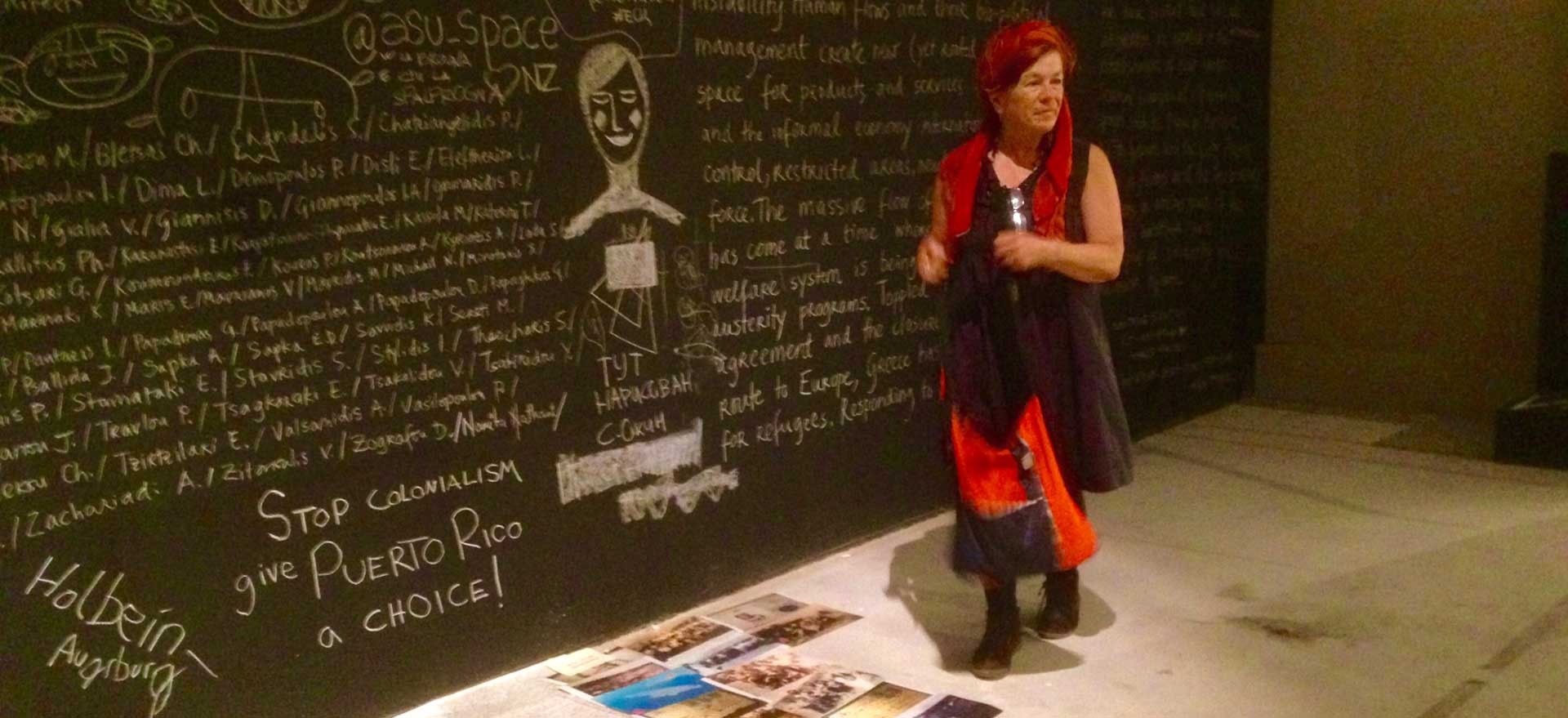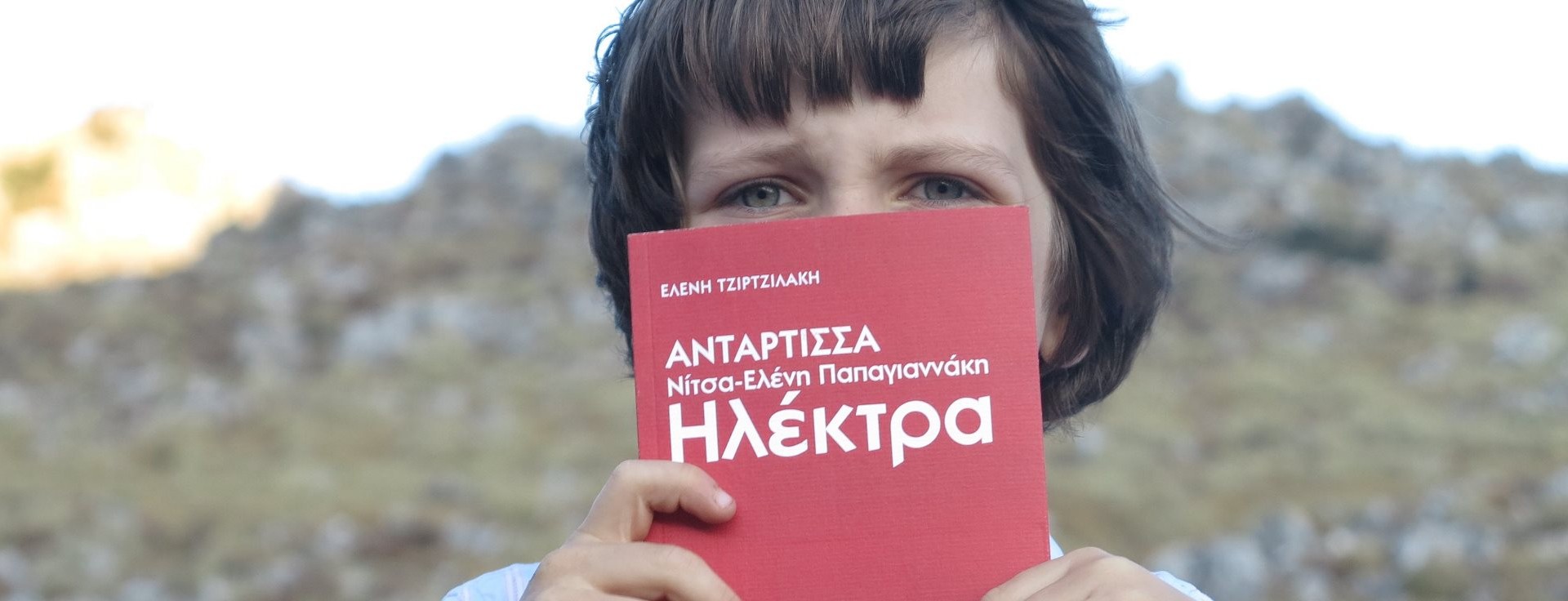Monument , Emigrant memory. Fragments of stories.
The good will come from the sea.[1]
The Monument «Emigrant memory, fragments of stories – The good will come from the sea”[2] will be a changing space-time, a monument dedicated to the refugees[3], a construction-ark proposed to be held in three locations, by the seaside in the town of Mytilene, [4] in Athens and in Kassel.
It is a monument regarding precarious life, vulnerability and loss which gives value to lives that are not considered as lives, that face unlimited violence during their journey and their stay as they have passed the boundary of the sea and are initially placed in Mytilene and afterwards in Athens so as to continue their journey. “Who is worthy as a human, whose lives are worthy as lives and finally what makes a life worthy of suffering?”[5]
The Monument will be a promise of solidarity and reconciliation within social limitations, exclusions and intense destructive controversies that occur now.
The materials used for its construction are related with materials from shipwrecks washed up by the sea such as reused fishing boat timbers, ropes, and colored fabrics.
It will contain memories and testimonies of immigrants and locals regarding their journey and their stay at the three locations mentioned above.
The memory for those leaving a place is something perishable which changes through their journeys. This vulnerability is intense when it deals with loss. “.. even amongst us, we do not talk about this past. Instead, we have found our own way to deal with an uncertain future. Since everyone makes plans, pray and hope, we do the same. However, besides these general human behaviors, we try to sort out the future more scientifically. After so much misfortune, we undoubtedly seek a way out. Therefore, we leave the land behind us with all its uncertainties and we look to the future. “[6]
The stories-testimonies that will form the content of the Monument are fragmental because they often concern others -the co-travelers who were lost during the journey, or they refer to a journey attempted again and again (11 times Omar’s journey to Europe), testimonies regarding life in detention centers which nobody wants to remember, and when someone narrates them they acquire another dimension. But also stories of events that took place during the journey such as a shipwreck, a strike. It has the meaning of a Memory Archive.
The concept of testimony is particularly important regarding the project and is studied through contemporary international literature.
“The testimony is an absolutely unique and irreplaceable topographic position regarding an incident. The uniqueness of this position lies in its paradox link with the internal and the external.[7]
Or as Giorgio Agamben says: The testimony takes place where the speechless makes the one who has voice to speak, while the latter has inability to speak with his own voice completely, so that silence, speech, humane, inhumane to enter an indiscretion zone in which it is impossible to define…. the true witness. [8]
The testimonies which will form the content of the Monument will be collected at three locations, several already exist, and will be placed respectively in the interior of the three constructions-Monuments that will be constructed: From the journey from Turkey to Mytilene island where the immigrants have crossed the border of the sea by stepping on the ground of Mytilene they finally arrive in Europe (Lesvos Island is chosen because it is the island with the largest influx of immigrants from Turkey) but also because the action “the good will come from the sea”, which has led to this plan-project, has already taken place on the island. Athens is the second stop of their journey, where they face many difficulties in their efforts to leave, regarding their ability to travel (usually hidden), but also difficulties in the accommodation itself, which although it may be temporary, it often lasts for years and sometimes becomes permanent. Kassel is the third place which symbolically represents, in accordance with their stories in the two previous places, the “desired place” – destination because it belongs to Northern Europe (it is studied through the testimonies).
With the testimonies it is aspired to connect the “interior” with the “exterior” as well as the “together”.
The interior of the three monuments-constructions will include mapping of routes and flows, stories–testimonies about the borders, the travel and the temporary stay in one of the three places, poems and songs as well as various objects. The material will be visual, auditory and tactile.
Stories of the locals about immigration will also be included. In Mytilene stories of the locals will be included regarding the shipwrecks, the people who were rescued, the Moria(detention center in Mytilene), the experience of the horio oloi mazi” (Village, all together), a solidarity network of volunteers. [9] the wait in the port as well as immigration songs, but also testimonies of previous migrations from the Asia Minor.
In Athens, the “Monument” will also include stories about events that take place in the city like the hunger strike of Syrian refugees in Syntagma Square, narrations about the stay in the city, about Xenios Zeus in the public space and more.
In Kassel, testimonies will be collected about immigrants who stay there. Also Greek immigrants’ testimonies about their recent immigration to Germany.
The above material will be presented through projections, prints, maps, voices, images, sounds, small items. The objective is these three spaces to be hospitable, familiar and remind us the interior of a house. They will be “a shelter” giving emphasis to the broader sense of hospitality, to the unfamiliar duty of hospitality, and to the right to hospitality.[10] During the event actions-meetings will be held, where immigrants will be invited to tell their stories, as well as lectures, discussions, and film projections.
Construction Materials of the Monument: wood, screws, cloth, canvas, fiber, ropes, colorful fabrics, amulets.
In the interior there will be small everyday objects, gas stove, melodist bell, refrigerator, cooking utensils, plates, cups, teapot, cutlery, desk globe, world map.
The space will be covered with carpets and there will be a low table and pillows.
For the implementation of this project there will be collaboration with the Caravan Project and other artists.
[1] The meeting-action “The good will come from the sea” was held on November 14, 2014, in Tsamakia beach in Mytilene by the Nomadic Architecture Network in collaboration with the Caravan Project. The text for the action was published in the Inserts of Avgi on Thursday, January 1, 2015 and is posted on the website of Nomadic Architecture.
[2] About a month before the action-meeting “The good will come from the sea”, the collection of short stories by Christos Economou was published, entitled “The good will come from the sea” (Polis Publications). Although the book does not refer to refugees and immigrants but to “internal immigrants”, Greeks that have left the city and live on an island of the Aegean Sea (without specifying which, it can be a metaphor or an allegory of Greece), it is worth mentioning the stories of Economou and the quality of his writing as well as some common concerns. Polis 2014.
[3]Hannah Arendt les origins du totalitarisme. L imperialism p.239 refers to the right of asylum. The text “Decline of the State-Nation and the end of Human Rights. The nation of minorities and people without a state” suggests an analysis of the contemporary history of minorities, of those without a state, without a homeland, of refugees, of banished…
[4] eleni tzirtzilaki, Urban voids as xώρος εν δυναμει[4]. Without a proper noun, Laura Lovatel- Federica Menin, Lupo Burtscher, Bolzano, November, 2014,www.nomadikiarxitektoniki.net
[5] Judith Butler, Precarious life, The powers of mourning and violence, Nisos, 2009
[6] Hanna Arendt, “We Refugees”, published in 1943 in a small Jewish magazine, the Menorah Journal, translation Kostas Despoiniadis, from the 13th issue of Notebook of Total Confrontation, PANOPTIKON
[7] Shoshana Felman and Dori Laub, Testimony: Crises of Witnessing in Literature, Psychoanalysis, and History. New York and London: Routledge, 1992, The return of the voice, Claude Lanzman,s Shoap, p.232
[8] Giorgio Agamben , Remnants of Auschiwtz the Witness and the archive, zone books 1999
[9] horiooloimaziblogspot.com
[10] Derrida Jacques, Beyond cosmopolitanism, Kritiki publications, 2003, page 19.




